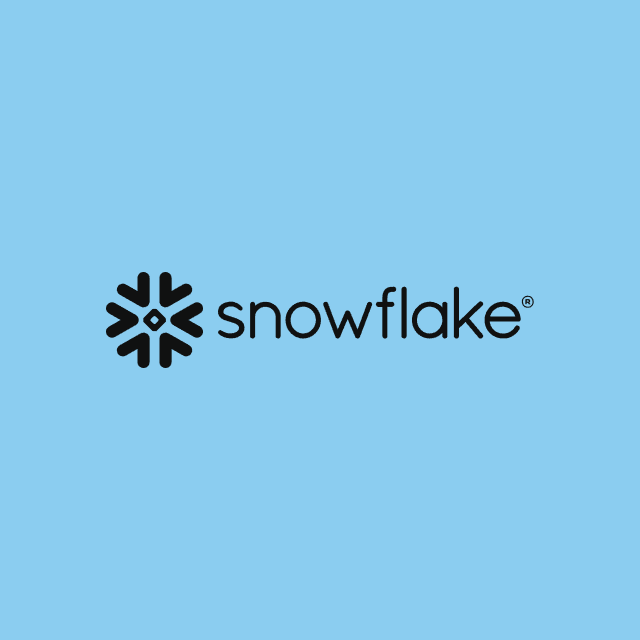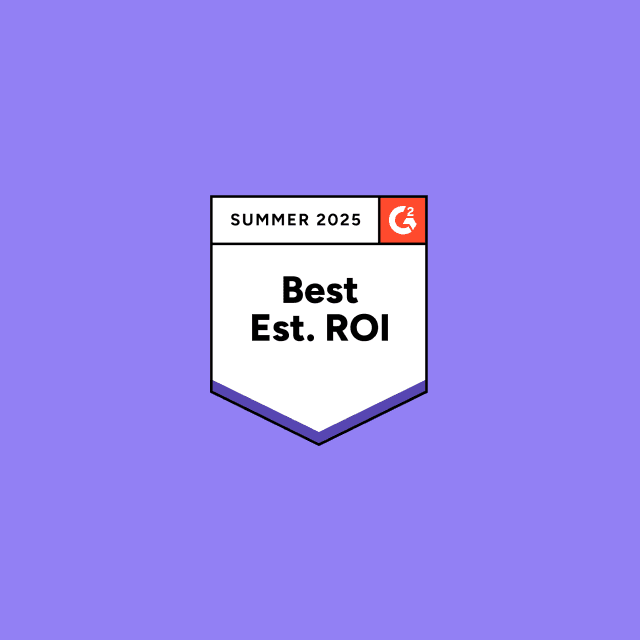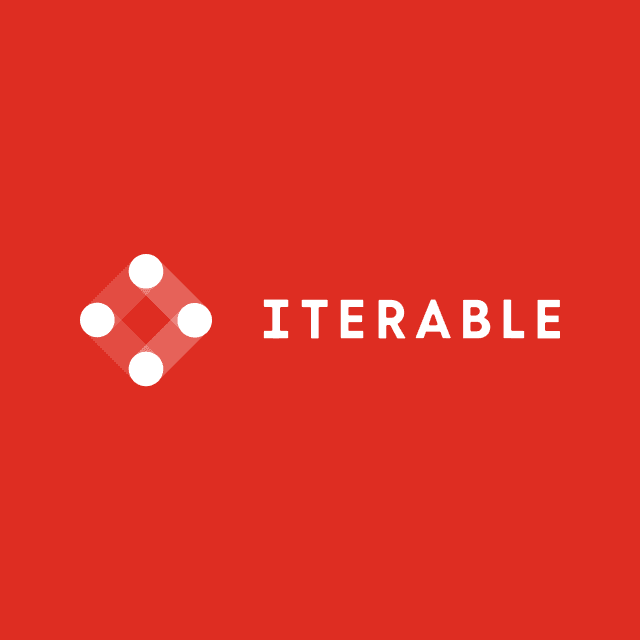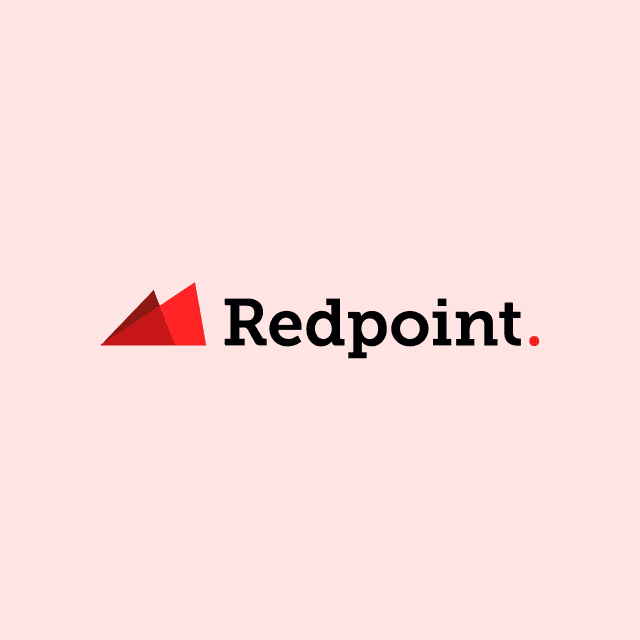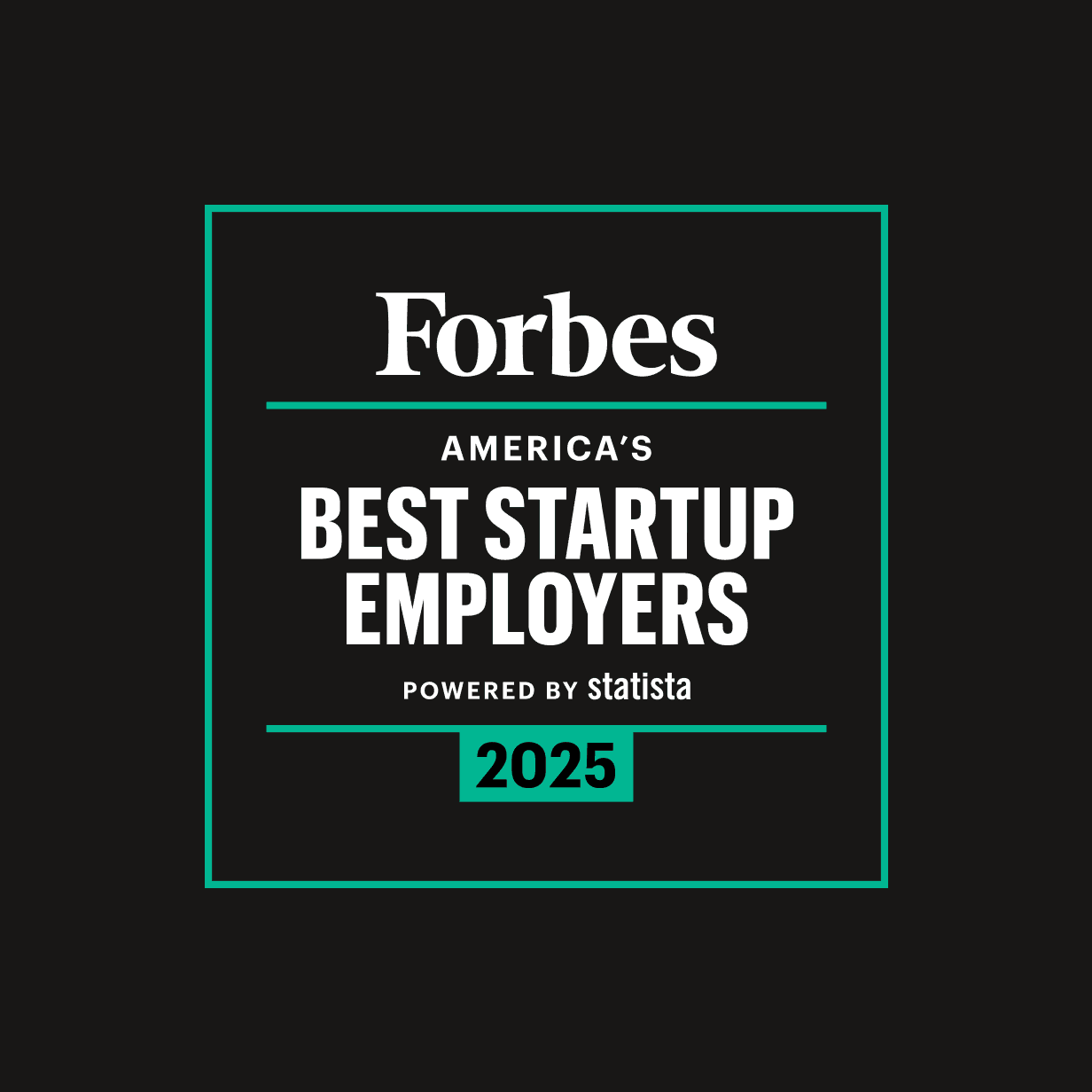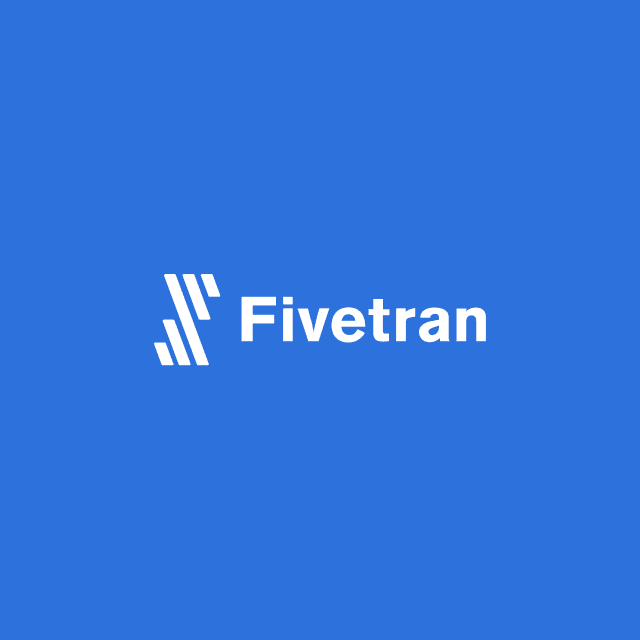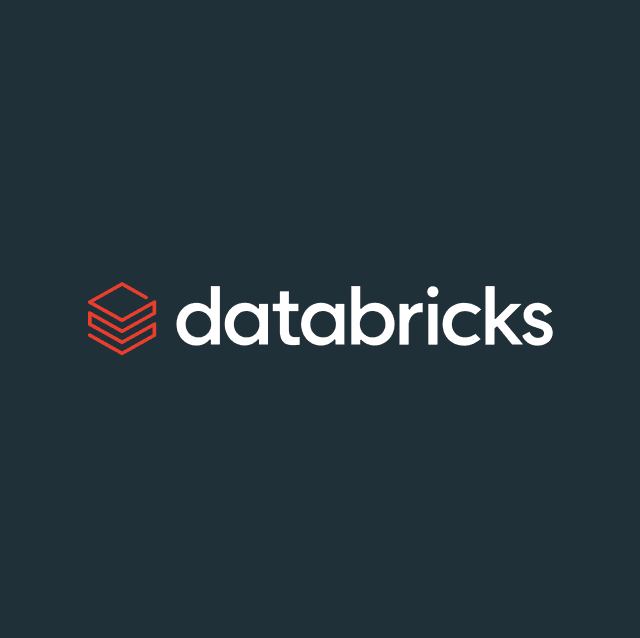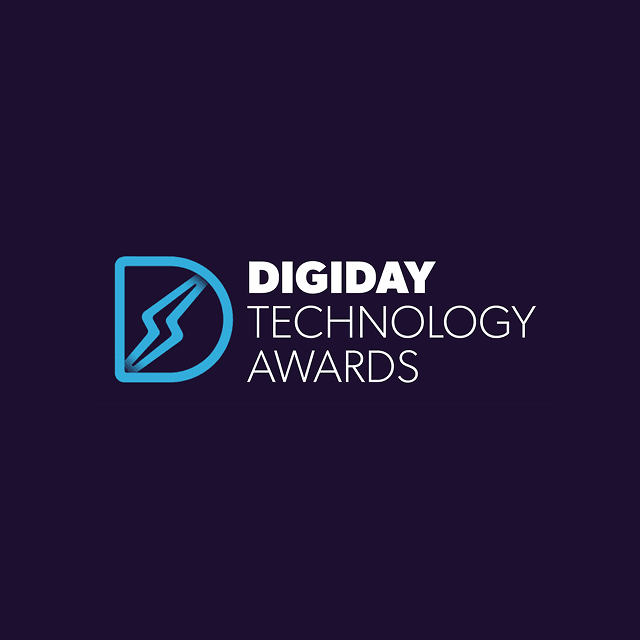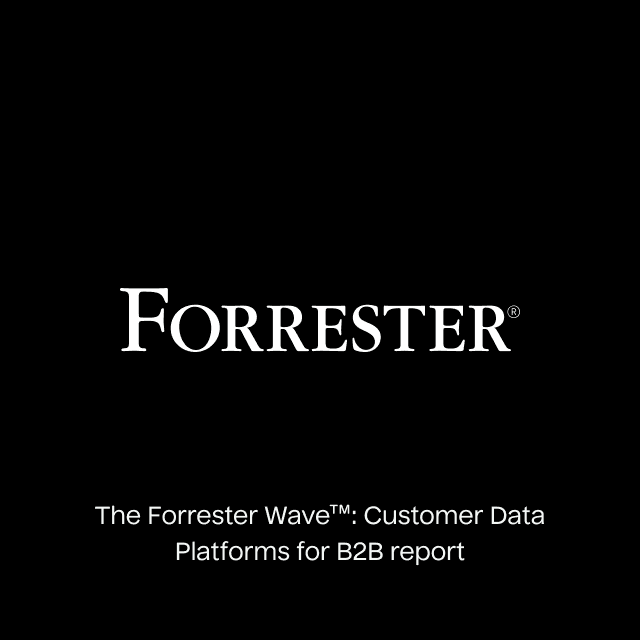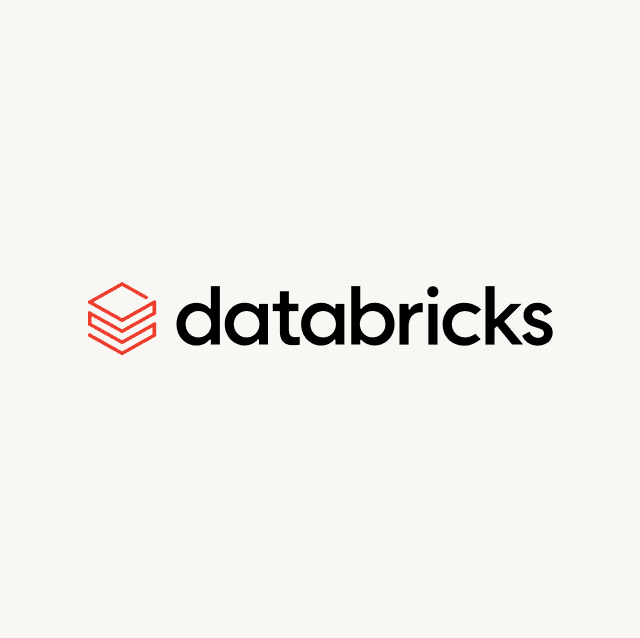Privacy is a huge concern when it comes to data these days, especially when it comes aligning with compliance laws around HIPAA, GDPR, CCPA, etc and other user privacy regulations. Still, many organizations need and want a secure way to share data between parties and this need has given rise to data clean rooms.
This blog post will cover:
- What is a Data Clean Room?
- Why Do Data Clean Rooms Matter?
- How Do Data Clean Rooms Work?
- Data Clean Room Use Cases
- Benefits of Using a Data Clean Room
- Types of Data Clean Rooms
- Brands Embracing Data Clean Rooms
- What's Next for Data Clean Rooms
What Is a Data Clean Room?
Data clean rooms allow companies to extract value from aggregate datasets sourced from multiple parties while prioritizing user privacy and maintaining strict security measures.
A data clean room is a secure environment where organizations can collect data from multiple sources and combine it with their first-party data. Doing so allows marketers to leverage large, aggregated datasets of consumer behavior to provide insight into critical factors like performance, demographics, campaigns, etc.
“Data clean rooms are one area of innovation that could unlock a new way for companies to continue to share valuable user-targeting data to drive personalized ads and experiences.” - Juan Mendoza, The Martech Weekly
The intended goal of a data clean room is to create a privacy-preserving space where customer data can be joined and utilized in a collaborative manner. Through a data clean room, two parties (usually, but not always, an advertiser and a publisher) can securely share data while controlling what, how, when, and where data is shared. Once the data sets are joined, marketers can extract value through profile enrichment, audience analysis, attribution, and activation.
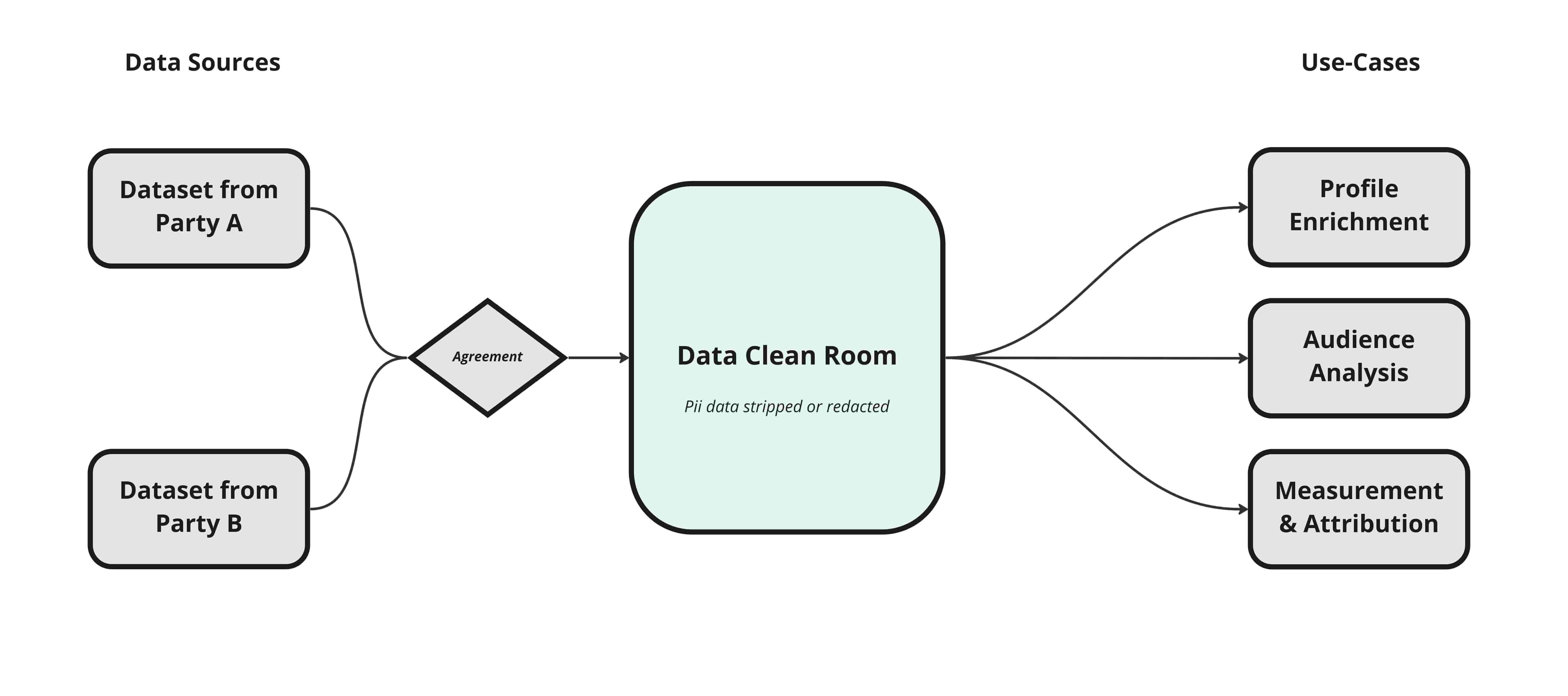
Data Clean Room Architecture
Upon finishing this blog, you'll know what data clean rooms are, how they work, and why they are paramount in the future of how marketers activate, analyze, and measure campaigns.
Why Do Data Clean Rooms Matter?
The rise in popularity of data clean rooms can be attributed back to two main drivers; deprecated cross-domain tracking and the overall tightening privacy landscape. Thanks to the emergence of new privacy laws and regulations limiting the use of third-party cookies, marketers are continuously dealing with tracking/signal loss–hindering their ability to fully understand the effectiveness of their marketing activities.
To understand cross-channel behavior, marketers of the past used relatively simple (yet privacy-naive) solutions that relied on third-party cookies to track users across the web. Cross-domain solutions like Apple's IDFA (identifier for advertisers) or Android's GAID (google advertising ID) allowed advertisers to quickly and efficiently track users across domains and leverage those insights to power marketing, measurement, attribution, and everything in between.
“And as each month progresses into the privacy winter, the return on the ad spend equation gets worse. Demand is growing for data clean rooms as a way to replace some of the capabilities of third-party cookies, but in a safer, more private way. - Juan Mendoza, The Martech Weekly
Fast forward to today, where major web browsers like Google Chrome or Safari block third-party cookies, rendering cross-channel IDs like MAID and IDFA essentially useless. With updates like iOS14, marketers have little ability to understand user behavior across channels and domains, and this is precisely why data clean rooms are so important.
By securely aggregating and joining customer data sets in a clean room environment, marketing teams can derive insights from a wide(r) range of data sources to better understand their customers while also meeting all consumer data privacy requirements.
The Ultimate Guide to Paid Media Integrations
Read our whitepaper to learn why conversion APIs are replacing 3rd-party cookies.


How Do Data Clean Rooms Work?
The first step in enabling a data clean room is for two or more partiers (again, typically a publisher and an advertiser) to collect, compile, and aggregate their 1st-party data at the user level.
These user-level datasets across the involved parties do NOT need to be the same, but they DO need a means of matching. Once in the clean room, these datasets can be matched using commonly hashed identifiers like email addresses, phone numbers, or user IDs.
After the data is assembled, it can then be loaded into a secure environment, AKA a "data clean room," as long as it adheres to all of the predetermined agreements between the parties. Any type of user-level data (e.g., transactions, household information, behavioral events, etc.) can be loaded into this secure environment.
Once data has been loaded, the information is matched and cleaned. Depending on the agreement between the two parties, this often includes encryption, hashing, pseudonymization, access restriction, and obfuscation. When configuring the clean room, rules are applied to ensure that all parties ONLY have access to their customer data and the new, enriched data sets outlined in the original agreement.

Data Clean Room Steps
Data Clean Room Use Cases
Although data clean rooms have a wide range of use cases, they can typically be bucketed into three main categories; Profile Enrichment, Audience Analysis, and Measurement and Attribution.
Profile Enrichment
One of the primary use cases of clean rooms is to "enrich" existing customer data with data sourced from alternate parties. Doing so helps marketing and sales teams better understand the users leveraging strategic data points that would have otherwise not been available to them.
For example, a credit card provider may want to enter into a data clean room agreement with Experian to enrich their customer profiles with psychographic data like shopping behavior. Leveraging the new enriched data points for segmentation, the credit card provider can then create custom audiences to target personalized campaigns across channels to drive personalization efforts.
Audience Analysis
Another major use case of data clean rooms is analyzing two separate customer data sets to drive actionable insights for one or both of the involved parties. Leveraging first-party data from multiple datasets, the involved organizations can perform deeper analyses to uncover insights like audience overlap to supercharge marketing and sales efforts.
For example, if a hotel and airline wanted to run co-marketing campaigns, they could stand up a data clean room solution that returned a list of customers that "overlapped" (e.g., customers of both parties). The two companies could then use this list of customers to determine the opportunity size of future campaigns or to personalize and co-brand current messaging.
Measurement And Attribution
Perhaps the most well-known use case of data clean rooms is attribution. To combat the threat and advantage of advertising "walled gardens" like Facebook and Google, major publishers turn to clean rooms to provide the same measurement and attribution features that the social and search giants have at their disposal. By analyzing the user overlap between conversions of advertisers and those with impressions within a publisher's ad network, publishers can provide closed-loop measurement features to help advertisers understand their return on advertising spend (ROAS).
For example, if a direct-to-consumer skincare brand purchased ten million impressions from a publisher like The New York Times. In that case, they could leverage a clean room environment to look at the overlap between customers who converted on their site and New York Times users who saw an ad impression. These insights could then be leveraged with their specific attribution model to calculate the overall campaign performance.
Benefits of Using a Data Clean Room
Data Privacy
With new privacy laws being introduced and the costly fines that come with breaching these, it’s important that when using and sharing data, businesses do so legally. It’s hugely beneficial for companies to share data to benefit from some of the use cases above. This is why data clean rooms are the perfect solution. They let you select the data you want to put into a data clean room and do so securely, preventing any issue with data privacy and any further laws that may come in place.
“Anonymizing the data can help to protect against potential legal and regulatory violations, such as HIPAA violations, as well as reputational damage. It can also protect patients' privacy, as the data cannot be traced back to an individual person, making it less vulnerable to data breaches.” - Luciano Colos, Founder & CEO, PitchGrade
Data Ownership
A data clean room allows companies to securely match first-party data without giving each other direct access to sensitive customer data. The clean room’s secure environment enables this matching process while putting in the security measures needed to ensure that the sensitive data cannot be removed. Clean rooms allow organizations to gain insights from shared data while ensuring they have security measures in place to avoid the data being used in an unlawful manner, which can result in major fines.
PII data is encrypted and safeguarded before we place it in a clean room. While authorized partners can receive a feed with anonymized data, the data owner has complete control over the clean room. - Himanshu Sharma, CEO & Founder, Academy of Digital Marketing
Clean room technology allows media buyers and sellers to match their consumer data without directly sharing it with each other. With privacy regulation and deprecation of identifiers, it is emerging as a powerful tool.
Data Analytics
Data clean rooms allow teams to leverage data that otherwise wouldn’t be accessible without sharing personal data in breach of privacy laws. Having access to more data means you have more data points to analyze and gain insights that wouldn’t have been possible.
“Clean rooms also enable ways to derive analytics from ad performance and user behaviours with data that is usually aggregated and anonymised. In short, the clean room is a new technology that makes new partnerships possible.” - Juan Mendoza, The Martech Weekly
Types of Data Clean Rooms
There are three primary types of clean rooms; "Media Clean Rooms", "Private Clean Rooms", and "Clean Rooms as a Service". While running off similar basic concepts, it is essential to understand the differences between each.
Media Clean Rooms
The first, and most well-known clean room type is provided by the so-called walled gardens of AdTech (e.g., platforms like Meta and Google.) Specifically called "Media Clean Rooms," these platforms have access to vast amounts of customer data and audience graphs from the largest advertising ecosystems on the planet. Media clean rooms like Google Ads Data Hub or Amazon Marketing Cloud each have full access to proprietary data sets that can be matched to first-party lists uploaded by advertisers. Aggregate reports can then be made available back to the advertisers to help them understand their campaign performance.
Private Clean Rooms
"Private Clean Rooms" are provided by companies with massive amounts of customer data and content. Most of the time, this includes large publishers of content like Disney, platforms like Spotify, or even companies with an extensive portfolio of brands like Dotdash Meredith. All of these companies have one common factor: they have their own private, clean room technologies to monetize their customer base and act as their own walled garden advertising ecosystem.
Clean Rooms as a Service
"Clean Rooms as a Service," are provided and sold by AdTech and software vendors. These clean rooms enable any two partner companies to put their first-party data into a neutral room that can then be safely and securely shared with one another. Clean room Vendors like Habu, Snowflake, and Databricks are leading the market here, offering a "bring your own data" model to any organization looking to stand up their own clean room deployment.
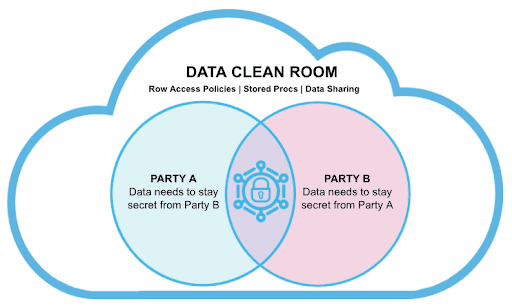
Depending on your specific needs, you may need one, many, or none of the above clean room types. Either way, it's important to understand how and when to best leverage each option, as clean rooms are by no means a small investment, and they're often seen as a significant privacy concern if not resourced properly.
Brands Embracing Data Clean Rooms
Data clean rooms may be a new concept to you, but many companies are taking advantage of it in the real world. Here are two examples of brands taking advantage of data clean rooms.
Pinterest and Albertsons
Pinterest have partnered with LiveRamp to produce a data clean room to enable ad partners to share their first-party data to make informed decisions on their advertising. The grocery chain Albertsons is the first brand to utilize this offering from Pinterest to help them leverage key reporting metrics like return on ad spend (ROAS).
“We believe using clean rooms can provide our clients with the data they expect to make informed decisions about their advertising in a privacy-preserving manner,” said Kristi Argyilan, SVP retail media, Albertsons Media Collective (Source: Martech.org )
Ionis Pharmaceuticals Inc Sharing Sensitive Healthcare Data
In the healthcare industry, handling sensitive data is critical, but sharing that data is important as it can help develop new insights that can aid with life-changing breakthroughs.
Ionis Pharmaceuticals is leveraging the technology of Snowflake’s distributed data clean rooms to share genetic data datasets while maintaining the strict data governance that comes with handling personal data.
“Being able to build a data white room so we can put that genetic data in a secure place, anonymize it and then share the amalgamated data back out in a way that’s able to be joined to the anonymized metadata, that could be pretty huge for us” - Nicholas Taylor, Executive Director of Informatics at Ionis Pharmaceuticals Inc (Source: Silicon Angle)
What's Next for Data Clean Rooms?
With the further deprecation of third-party cookies and new consumer privacy regulations on the rise, data clean rooms will become an essential tool in the advertising and marketing technology ecosystem. Gartner, a leading technology research and consulting firm, predicts that by 2023, 80% of advertisers with media budgets of $1 billion will utilize data clean rooms.
As the adoption curve makes a beeline up and to the right, clean room technology will need to evolve with it. Cloud providers like Snowflake and Databricks will rapidly evolve their product offerings to capture the rising demand, making their products more accessible, efficient, and secure.
Finally, clean room providers will need to integrate more comprehensive activation features to stay relevant and competitive. Consumer brands, publishers, and startups alike will embrace clean room technologies to derive deep customer insights and supercharge their marketing efforts. Once they do, they will want to seamlessly sync those insights back into the operational tools, marketing applications, and advertising platforms their business teams utilize every day.
Data Activation will become a key component of data clean rooms to help ensure that customers are maximizing their investments in this technology.
The Ultimate Guide to Paid Media Integrations
Read our whitepaper and learn why conversion APIs are replacing 3rd-party cookies.
- The death of third-party cookies
- Leveraging conversion signals to boost ROAS
- Sending conversions events to ad platforms






